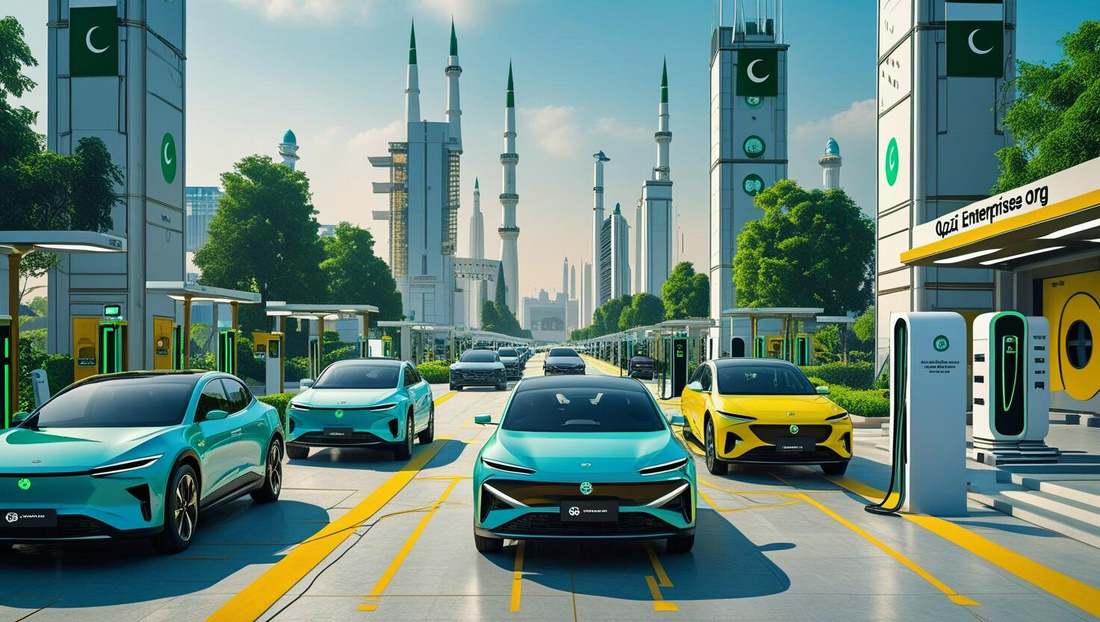
Pakistan's Auto Industry in 2025: On the Brink of an Electric Revolution
Share
ISLAMABAD, Pakistan - Pakistan's auto industry is navigating a period of dramatic transformation. A powerful combination of a government-led push towards electric vehicles (EVs), fluctuating sales figures, and the arrival of new international players is reshaping the automotive landscape. For Pakistani consumers, this means more choices than ever, but also a new set of challenges to navigate. Let's dive into what's driving the change and what it means for you.
The EV Wave is Here and It's Big
The most significant shift in the market is the aggressive push for electric vehicles. The government's new National Electric Vehicle (NEV) Policy for 2025-2030 is ambitious, aiming for 30% of all new vehicle sales to be electric by 2030.[1][2] This bold move is designed to slash the country's massive oil import bill and tackle the severe air pollution plaguing its major cities.[1][3]
To make this happen, the government is rolling out some attractive incentives for buyers:[1][2]
-
Subsidies: A PKR 65,000 subsidy for electric two-wheelers, PKR 400,000 for three-wheelers, and up to PKR 15,000 per kilowatt-hour for four-wheelers.[1][2]
-
Free Registration: Zero registration fees for eligible EVs.[2]
-
Charging Infrastructure: A plan to establish 3,000 public EV charging stations by 2030, with 40 fast chargers being installed in the next six months alone.[1]
This policy has already caught the attention of global EV giants. China's BYD, the world's largest electric car maker, has secured a manufacturing license and plans to set up an assembly plant near Karachi by early 2026.[4][5] This influx of new, predominantly Chinese and Korean, brands is set to challenge the long-standing dominance of Japanese automakers.[3]
A Look at the Numbers: 2025 Car Sales
The auto market has seen a rollercoaster of sales figures this year. According to the Pakistan Automotive Manufacturers Association (PAMA), year-on-year car sales saw a healthy jump of 22-28% in July 2025.[6][7] This suggests a recovery driven by a more stable economy, lower interest rates, and improved consumer confidence.[6][7]
However, looking at the month-on-month figures, sales took a sharp 49-60% dive in July compared to June.[6][8] Analysts attribute this to a pre-budget buying surge in June, as consumers rushed to purchase vehicles before anticipated tax increases.[6][7] Despite this monthly dip, the first half of 2025 showed an overall expansion, with total sales up by 35.6%.[9]
New Cars and Rising Prices: What's on Offer?
2025 has been an exciting year for new car launches, with a clear focus on electric and hybrid models. This is giving consumers more variety, but rising prices remain a major concern for the average buyer.[10]
Here are some of the new models that hit the market recently:[11]
| Car Model | Expected Price (PKR Lakhs) |
| Riddara RD6 | 133 - 170 |
| Jaecoo J6 | 88 - 108 |
| Omoda E5 | 89.9 |
| BYD Shark 6 | 200 |
While new entrants are creating a buzz, traditional players like Suzuki, Toyota, and Honda are still leading in sales volume.[9] However, a recent reduction in tariffs on imported vehicles has led to a 61% surge in car imports in July 2025, raising concerns among local manufacturers about increased competition.[12]
The Bumps in the Road for Consumers
Despite the positive developments, Pakistani car buyers still face significant hurdles. The ever-increasing prices make affording a new car a challenge for many middle-class families.[13]
Beyond the price tag, other persistent issues include:
-
Quality Control: Complaints about the build quality of locally assembled cars, such as panel gaps and paint defects, are common.[14]
-
"On-Money": The frustrating practice of dealers charging a premium over the invoice price for immediate delivery continues to plague the market.[14]
-
Lack of Options: For years, consumers have had limited choices, especially in the budget-friendly segment, due to protectionist policies.[14][15]
A Look Ahead: The Road to 2030
The future of Pakistan's auto industry looks dynamic and is geared towards electrification.[16] With the government's strong policy support and the entry of new global players, the market is poised for significant growth.[4][16] Projections suggest that by 2030, EVs could make up a substantial portion of all vehicle sales in Pakistan.[4][5]
For the consumer, this transition promises a future with cleaner air, lower running costs, and a wider array of vehicle choices. However, for this vision to become a reality, the industry must address the core issues of affordability, quality, and transparency. If it can successfully navigate these challenges, Pakistan's auto sector is on track for an exciting and sustainable future.


